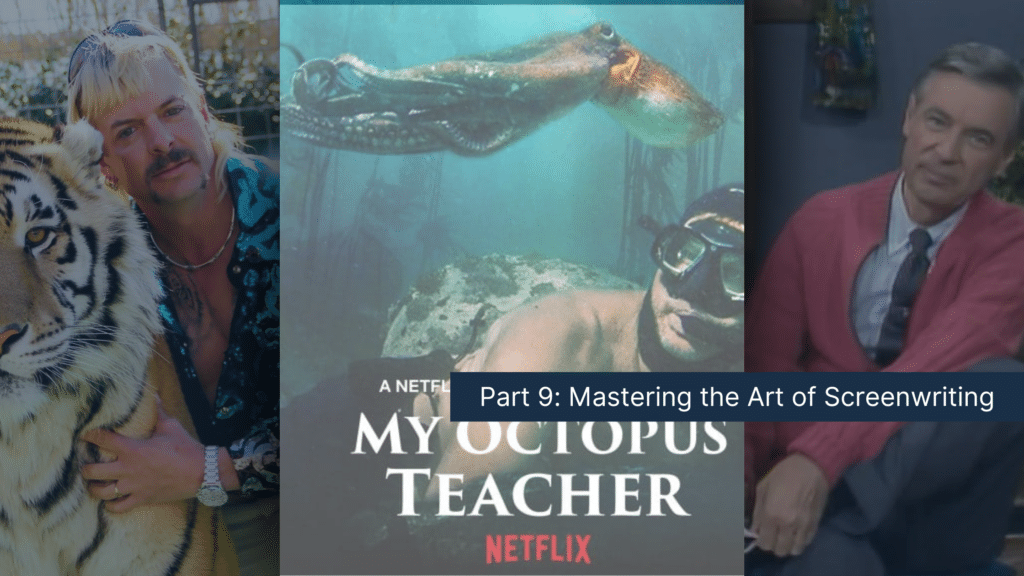
This is Part 9 of the Celtx Screenwriting Series: Write a Script in Every Genre
Documentary has a power possessed by no other genre – to educate, inform and evoke an emotional response from audiences.
A well-written documentary script serves as a blueprint for telling compelling, real-life stories that capture the truth and shed light on prominent issues.
Unlike the traditional movie script, documentaries focus on presenting facts, real experiences, and often explore the human condition. Understanding the essential steps for writing a documentary is crucial.
In this next installment in our Mastering the Art of Screenwriting series, we’ll take a deep dive into the process of creating your own documentary script, from concept to post-production.
Whether you aim to tell personal stories, explore societal issues, or shed light on key historical moments, writing a documentary script is the foundation of any successful film. Having a strong script guides the direction of your move and ensures your audience remains engaged and informed. People watch documentaries to learn, so you need to make sure they have something tangible and meaningful to take away from their viewing experience.
We’ll even take a look at some of the best examples of documentaries and explore the impact they’ve had on the world. Who knows – perhaps your documentary script will be the next groundbreaking film to set pulses and minds racing?
What Sets Documentary Scripts Apart?
Documentary films differ significantly from their traditional narrative and fictional counterparts. The biggest difference is in their reliance on real-life events, people, and situations.
Based in fact, namely through real events, interviews and archival material, documentaries explore the authenticity of life as it unfolds – the good, the bad and the ugly! Rather than solely entertain, like a traditional movie, documentaries aim to inform and educate their audiences.
Of course, with such great responsibility in telling someone’s story, comes a huge amount of research. Especially when we’re dealing with real stories, we have a responsibility to manage narratives ethically. Documentaries like My Octopus Teacher have been praised for their respectful approach, whereas films like Tiger King and Supersize Me have been criticized for exploiting their subjects.
Ethics should always be at the forefront of writing a documentary, and it’s important our subjects are portrayed with dignity, and their stories remain truthful. We only want to inform our audience, not mislead them!
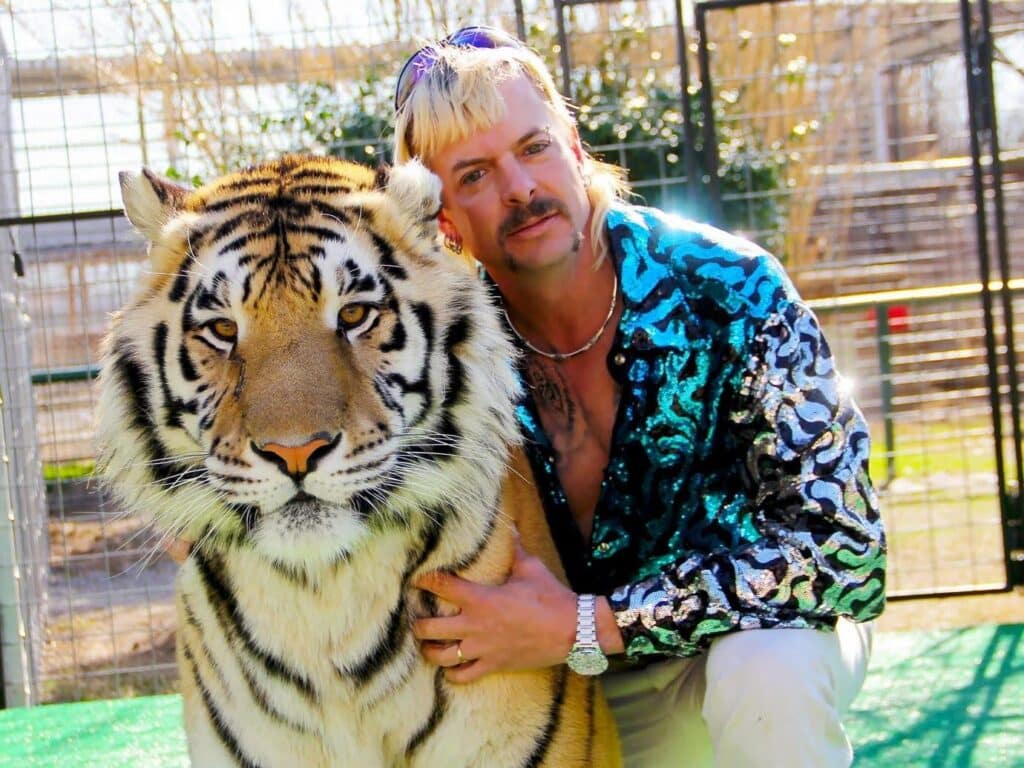
As a documentary writer, you’ll need to conduct extensive research and interviews as well as explore the factual sources you have at your disposal. This depth of research is the foundation of any documentary script, setting them apart from the imaginative worlds you’d create in your movie scripts.
Character depth is just as important in documentary scripts as in a traditional script, but they instead focus on real people (individuals or groups) and their stories. However, unlike fictional movies, character arcs in documentaries are typically shaped by real events and emotions, making them raw, authentic and relatable.
Where plot structure may take precedence in traditional movies, documentaries focus more on larger themes. These could be environmental challenges, political commentary, social issues or a specific element of the human experience. The goal of presenting these themes is usually to raise awareness and provoke thought.
Frame your narrative with Celtx’s easy-to-use storyboarding tools.
Key Elements of a Documentary Script
So, now we know the aim of a documentary script, let’s take a look at the key elements you’ll need to include to build its foundation. Once you’ve nailed these, you’re well on your way!
Story Structure
While documentaries don’t follow the traditional three-act structure as strictly as traditional films, they often use a structured framework to guide the narrative.
Beginning with the introduction, it’s important for documentaries to hook in their audience, just like a traditional movie. This hook gives the audience a taste of the story’s subject and raises curiosity.
The documentary could begin with an impactful moment, powerful image, or a key question that compels viewers to keep watching.
Take the opening moments of My Octopus Teacher, where we’re introduced to the deep bond between the filmmaker Craig Foster and a wild octopus. This immediately immerses us in their unique and emotional journey.

Development and Conflict
The middle section of a documentary explores the central conflict or theme. Here you could introduce the challenges faced by your subject and how they navigate these obstacles. Use these obstacles to build tension as the documentary progresses.
Academy Award-winning documentary Free Solo follows climber Alex Honnold as he attempts to climb the 3,000-foot El Capitan rock face in Yosemite National Park without ropes. The middle section of the documentary successfully develops tension by exploring Alex’s physical and psychological challenges.
The conflict in Alex’s journey arises from the intense clashing of his goal and the emotional toll it takes not just on him, but those around him.

Resolution and Reflection
A documentary’s conclusion should offer a sense of closure or deeper understanding of the subject matter. You want to leave your viewers pondering the broader implications of the story’s events and themes.
Won’t You Be My Neighbor? explores the life and legacy of Fred Rogers, the beloved host of Mister Rogers’ Neighborhood. The closing of the documentary focuses on Rogers’ unwavering commitment to kindness, empathy, and understanding which resonates powerfully in a world that is increasingly polarized.
The ending encourages viewers to consider how they can apply Rogers’ principles to their own lives, and by focusing on the broader implications of his work, we’re left with a sense of nostalgia and inspiration.
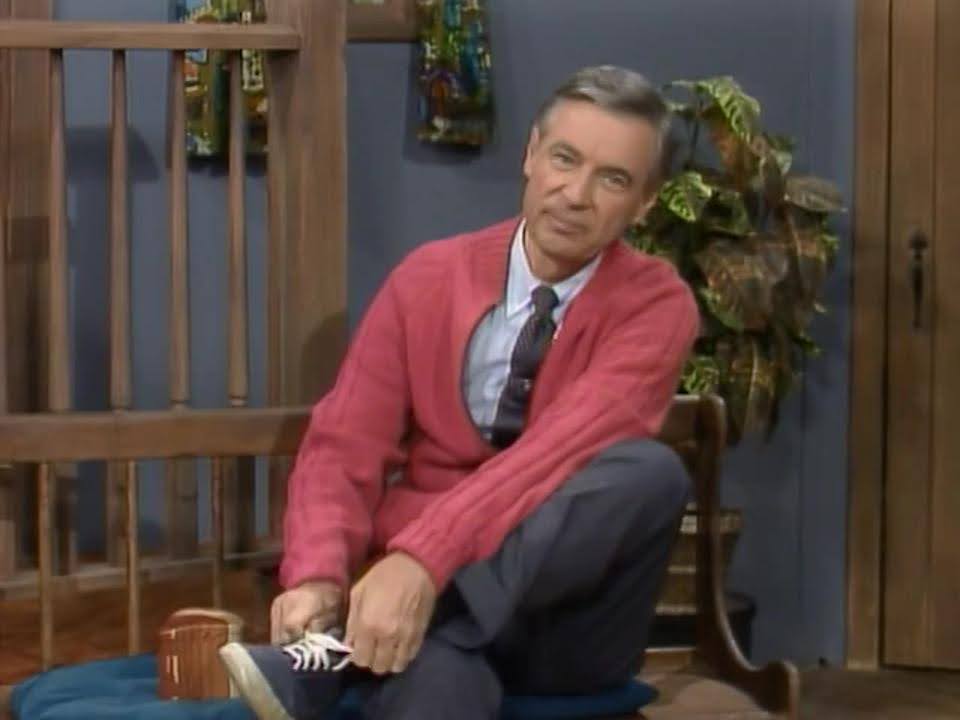
Themes and Storytelling
Getting your theme spot on is essential in creating a poignant and powerful documentary. The best documentaries explore universal truths, social issues, or human experiences that resonate with audiences on a deeper level.
There are some themes you’ll see pop up repeatedly in the world of documentary and can be great starting points in pulling your idea together.
Human Connection
We all crave it, even the most independent of us. Connection with each other, with the world, and even with nature. Returning to My Octopus Teacher, we see an excellent example of how a documentary explores the theme of human connection with nature.
Foster’s relationship with the octopus highlights the beauty of empathy and how all life is interconnected, despite our differences. Here is one of our favorite clips showcasing this connection.
Environmental Awareness
There’s no getting away from it – climate change is affecting us all. Themes related to nature, sustainability, and the planet’s future are strong driving forces behind many documentaries.
Take Before the Flood, which uses compelling storytelling to highlight the environmental crisis, and urges us as an audience to take action.
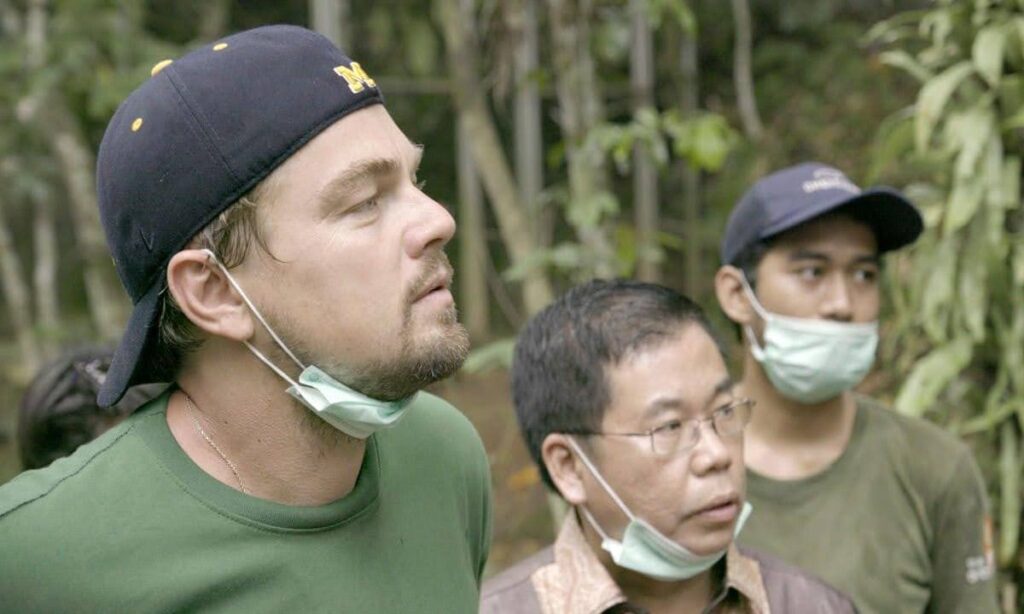
Identity and Personal Growth
We all need motivation once in a while, and documentaries that explore themes of identity, self-discovery or a personal transformation can be the boost we need! Michael Jordan’s illustrious sporting career is documented in the mini docuseries, The Last Dance, shedding light on his journey, the challenges he faced, and his lasting impact on the world of basketball.
Social and Political Issues
Sometimes documentaries can serve as a magnifying glass onto the best and worst of humanity, shining a light on social issues.
13th does this extremely well, highlighting an issue of systemic racism and mass incarceration. The documentary uses historical context and real-life testimonies to raise awareness and spark discussions on social justice. Check out the full documentary below:
Character Arcs and Authenticity
Remember, that in documentary, your characters are real people whose journeys need to be captured in an authentic way. Unlike fictional characters, documentary subjects must be portrayed honestly and respectfully. But the question is, how do we present a compelling character arc that entices an audience, but portrays our subjects in an authentic way?
While their arc may not follow the conventional rise and fall, we see in traditional movies, we can slowly reveal their evolution, either emotionally or by unveiling a larger societal issue.
The most important thing is to ensure the individuals we feature, remain true to themselves and that their stories aren’t misrepresented for sensationalism.
Planning and Research
Before you even begin writing your documentary script, it’s essential to complete your planning and research. A well-researched script not only provides you with a foundation of credible information and source material, but also ensures the story remains authentic.
First, pick your subject matter. Then create a research plan that outlines your key themes, questions and moments you wish to explore. A structured approach like this help you capture all the essential elements of your documentary.
Then, it’s time to start researching. You could explore historical context, collate statistics, conduct interviews and harness existing sources. Here are just some ideas of where you could get started:
Archival Material
Why not access archives, interviews, and primary sources to gather authentic material that supports your narrative?
Related reading: How to Conduct a Documentary Interview: Top Interview Techniques and Tips for Documentary Films and TV || Medium
Interviews
You’re telling the stories of real people, so hearing their accounts first-hand is crucial to ensure the best possible outcome! Whether they’re experts, eyewitnesses, or subjects, these people are crucial to the success of your documentary. Ensure you have the accounts of credible voices that provide diverse perspectives around your subject matter.

Writing the Script
So, you’ve gathered your research and identified the key themes you want to explore? Well, now it’s time to write!
First, you’ll need to organize your script and supporting material into clear sections: Introduction, Body (Development/Conflict), and Conclusion. Unlike narrative movies, you don’t need dialogue-heavy scenes, but they do need to be clear and structured, showcasing real-life actions and the words of your interviewees.
Visual descriptions are also a crucial part of your script. Describe scenes in detail, focusing on visuals, locations, and key moments that capture the essence of your story.
Within these descriptions, you’ll also want to seamlessly integrate any interviews and archival material to provide different contexts.
To help guide your overall narrative, you may wish to include voiceovers, like many other documentaries. If you are going to use voiceover, it’s important to ensure it’s compelling and always connected to the visuals, as you don’t want to distract from what’s happening on screen – only enhance it!
Post-Production Shaping
Once you’ve edited your voiceover, interview clips and archival material together, the final phase of your documentary process is post-production. Here is where editing transforms your raw footage into a cohesive story.
But why do we need to edit? Surely the raw footage and words of our subjects are enough to compel an audience. Well, editing helps shape your documentary into a compelling narrative and ensures the pacing and structure work to highlight the overall themes of the movie.
You’ll also want to make sure that archival footage and interviews are seamlessly slotted together and layered to support the authenticity of the story you’re trying to tell. If everything is disjointed, it can be jarring for an audience. Ensure everything flows!
With polished post-production, you also allow your documentary to evoke as much emotion as possible. By layering music and sound design as well as a careful selection of visuals, you can have an enormous impact on how your audience resonates.
FAQs
Yes, just not in the same way as narrative films. Most documentaries use a treatment, outline, or paper edit that guides structure, interviews, and story flow.
Look for a subject with emotional stakes, tension, unanswered questions, or change over time. A compelling central character or conflict helps anchor the narrative.
Prepare guiding questions, not dialogue. Your goal is to prompt authentic answers while shaping the conversation around your story’s themes.
Short-form docs may use a 1–3 page treatment; feature documentaries often use 5–15 page outlines or scripts depending on complexity.
Absolutely! Many do. As long as you’re transparent about the approach, reenactments, narration, and staged visuals can help clarify story, mood, and tone.
Conclusion
Creating a documentary script is a unique and rewarding challenge that requires equal parts creativity, research, and responsibility.
By crafting a compelling story structure, developing authentic character arcs, and emphasizing critical themes, you lay the groundwork for a powerful film that resonates with audiences. Whether you’re diving into environmental issues like Before the Flood or exploring personal growth as seen in My Octopus Teacher, every choice you make in your script can shape the viewer’s experience.
With thoughtful planning, research, and post-production editing, your documentary can inform, inspire, and make a lasting impact on the world.
Focus on your story, not your formatting.
Let Celtx’s Script Editor automatically apply all industry rules while you focus on the story.
Explore the Full Series:
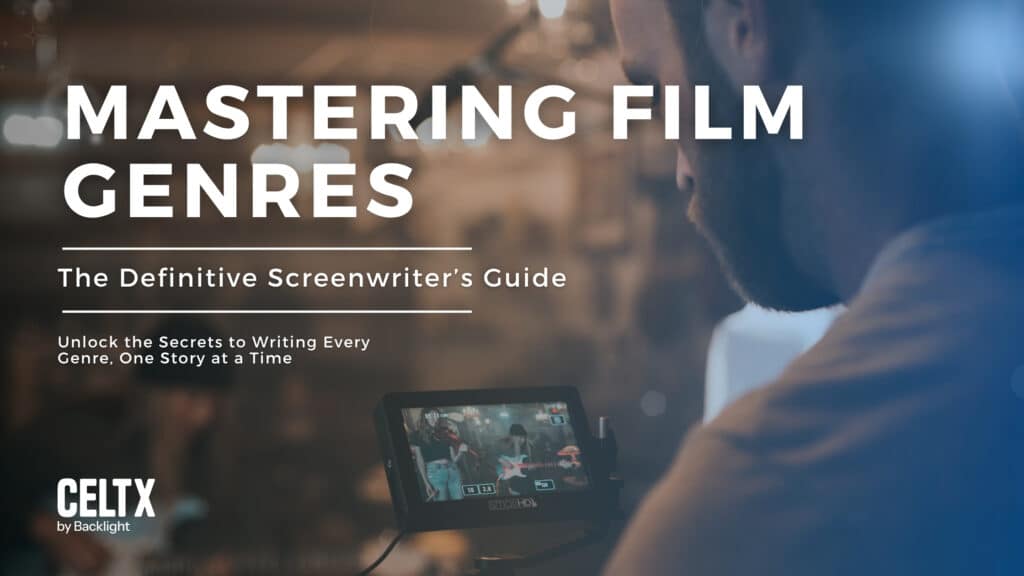
Mastering Film Genres: The Definitive Screenwriter’s Guide
Explore the bigger picture of genre writing—from structure to tone to audience expectations—and see how every genre connects back to the fundamentals of great storytelling.
